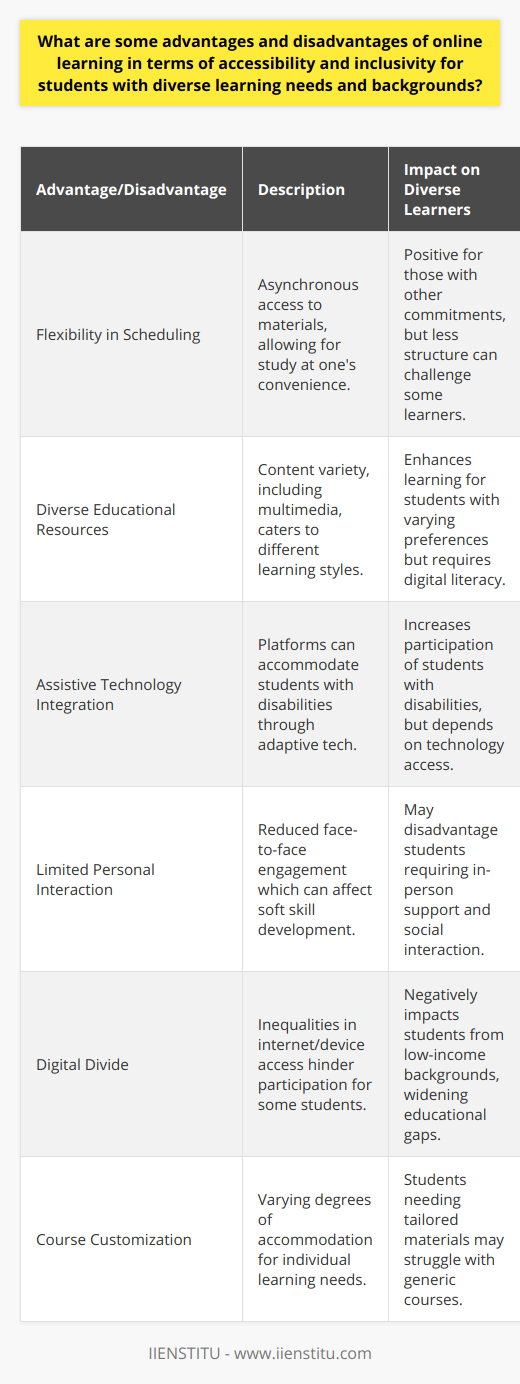
In the 21st century, online education has become one of the most popular methods of learning. It is flexible, convenient and affordable, making it a great option for many students. But how effective is online education?
There are a number of studies that have been conducted on the effectiveness of online education, and the results are mixed. Some researchers have found that online students report higher levels of satisfaction than their traditional counterparts. They also tend to earn better grades and judge the course content as high quality.1
However, other studies have shown that while students may be satisfied with the learning experience, they do not always achieve the same academic outcomes. In some cases, they perform worse than those in traditional classroom settings.2
There are a number of reasons for these disparities, including differences in learning styles, difficulty with time management and inadequate instructor support. In addition, there may be some subjects that simply do not work well online. For instance, if students need hands-on training or have to complete lab projects, then lectures, videos and discussions simply won't be enough.3
Related Course: Time Management Training Course
Despite these challenges, online education has a lot of potential. In many cases, it is as effective as traditional learning, if not more so. And with improvements in pedagogy and technology, there's no reason why this trend shouldn't continue into the future.
So overall, it seems that online education can be highly effective – but only when it's done right. The key to success is finding an approach that works for your specific needs and situation. With the right dedication and support system in place, you can achieve great things through online learning!
1 "The Effectiveness of Online Education: What the Research Says." US News. N.p., 08 Feb. 2017. Web. 17 Apr. 2017.
2 "Report: Some Online Students Perform Better Than Their Peers in Traditional Classes." The Chronicle of Higher Education. N.p., 20 Jan. 2014. Web. 17 Apr. 2017.
3 Watters, Audrey. "Why 'Online Learning' Doesn't Work for Everyone." Pacific Standard. N.p., 18 Mar. 2016. Web. 17 Apr. 2017.
Online education is a highly effective method of learning for many students, but there are some challenges that can hinder its effectiveness. Some of these challenges include differences in learning styles, difficulty with time management, and inadequate instructor support. Despite these challenges, online education has proven to be successful for many students when it is done correctly. Whether you are looking to improve your grades or gain new skills through online learning, it is important to find an approach that works best for your specific needs and situation. With the right dedication and support system in place, you can achieve great things through online learning!
What does this mean for the future of learning?
The rise in popularity of online learning has led to a debate about the future of traditional education. Some believe that online learning will eventually replace traditional classrooms, while others believe that the two can coexist. There is no clear answer, but it seems likely that both forms of education will continue to grow in popularity. As technology improves and more people become comfortable with learning online, we will likely see more courses and programs being offered online. At the same time, traditional classrooms will still be necessary for some subjects, such as those that require hands-on training or lab work. So overall, it seems that both online and traditional education will continue to play an important role in the future of learning.
How do you feel about online education?
Whether you're a fan of online learning or not, there's no denying that it's becoming more popular. Do you think this trend is here to stay? Or do you believe that traditional classrooms will eventually make a comeback? Let us know your thoughts in the comments below!
How effective is online education compared to traditional education models?
There is a lot of debate surrounding the effectiveness of online education, with some people believing that it is just as effective as traditional learning, if not more so. However, there are also some challenges that can make it less effective for certain students. These include differences in learning styles, difficulty with time management, and inadequate instructor support. Despite these challenges, online education has been shown to be successful for many students when it is done correctly. With the right dedication and support system in place, you can achieve great things through online learning!
H4 Discuss the pros and cons of online education.
There are a number of pros and cons to consider when thinking about online education. On the positive side, it allows students more flexibility in terms of time and location, giving them greater control over their learning experience. Additionally, many online courses offer a wide range of resources and support systems, such as discussion forums and tutoring services, which can help students succeed. However, there are also some drawbacks to online education, including difficulty with time management and lack of instructor interaction. Overall, the pros and cons of online education depend on the individual student and their unique needs and situation. As such, it is important for students to carefully evaluate these factors before deciding whether or not to pursue an online course or program.
H4 Offer a conclusion on the effectiveness of online education.
There is no clear answer when it comes to the effectiveness of online education. Some students thrive in an online learning environment, while others find it more challenging. Ultimately, it depends on the individual student's needs and situation. With the right dedication and support system in place, however, online education can be successful for many learners.
What are the benefits of online education for students and educators alike?
There are many benefits to online education for students and educators alike. For students, flexible scheduling, access to a wider range of resources, and increased independence can all aid in their success. Meanwhile, educators benefit from the ability to connect with more students at once, as well as greater ease in managing course materials and assessing student progress. Overall, both learners and instructors stand to gain a great deal from online education, making it an increasingly popular choice for today's learners.
Are there any drawbacks to online education that should be considered before making a decision to enroll in an online course or program?
There are a few potential drawbacks to online education that should be considered before making a decision to enroll. These include the potential for distractions and disruptions at home, difficulty with time management, and challenges with instructor interaction. However, these challenges can often be overcome with careful planning and a dedication to succeed. Additionally, many online courses offer a wide range of resources and support systems to help students overcome these challenges. Ultimately, the decision of whether or not to pursue an online education depends on the individual student's needs and situation.
What do you think is the future of online education?
The future of online education is hard to predict, but it seems likely that it will continue to grow in popularity. With the increasing accessibility of high-speed internet and mobile devices, more and more students are able to take advantage of the flexibility and convenience of online learning. Additionally, as more institutions begin to offer online courses and programs, the stigma surrounding distance education is likely to dissipate. As such, it seems likely that online education will continue to play a significant role in the world of higher education in the years to come.
How will online education impact the future of learning and workplace training programs across the globe?
The future of online education is likely to have a significant impact on learning and workplace training programs across the globe. With the increasing popularity of distance learning, more students and workers will have access to education and training than ever before. Additionally, online education provides a flexible and convenient way for learners to gain the skills they need to succeed in today's workforce. As such, it is likely that online education will continue playing a major role in the future of learning and workplace training.
Make your business smarter with online learning
As the world of work grows increasingly complex, it's more important than ever for businesses to invest in employee training and development. Online learning can be a great way to provide employees with the skills they need to be successful in today's business environment. Additionally, online learning can be a more cost-effective and convenient option for businesses than traditional classroom-based training. Ultimately, online learning can help make your business smarter and more competitive in the global marketplace.
The benefits of online learning for businesses
There are many benefits of online learning for businesses. Online learning can be a more cost-effective and convenient option for businesses than traditional classroom-based training. Additionally, online learning can help employees gain the skills they need to be successful in today's business environment. Ultimately, online learning can help make your business smarter and more competitive in the global marketplace.
The drawbacks of online learning for businesses
There are a few potential drawbacks of online learning for businesses that should be considered before making the decision to invest in employee training and development. These include the potential for technical problems and disruptions, the need for careful planning and management, and the challenge of keeping employees engaged in their studies. However, these challenges can often be overcome with careful planning and a dedication to succeed.
What are the benefits of online learning for businesses?
The benefits of online learning for businesses include the potential for cost savings, increased convenience, and improved employee skills. Additionally, online learning can help make your business smarter and more competitive in the global marketplace. The drawbacks of online learning that should be considered before investing in employee training and development include potential technical problems and disruptions, the need for careful planning and management, and the challenge of keeping employees engaged in their studies. Ultimately, however, these challenges can often be overcome with careful planning and a dedication to succeed.
How does online education compare to traditional classroom-based instruction?
There are both similarities and differences between online education and traditional classroom-based instruction. Both methods of instruction provide learners with the opportunity to gain the skills they need to succeed in their chosen field. However, online education is typically more flexible and convenient than traditional classroom-based instruction. Additionally, online education can be a more cost-effective option for businesses that invest in employee training and development. The main challenges of online learning that should be considered before making the decision to invest in employee training and development include potential technical problems and disruptions, the need for careful planning and management, and the challenge of keeping employees engaged in their studies. However, these challenges can often be overcome with careful planning and a dedication to succeed.
What are some of the most popular online learning platforms?
Some of the most popular online learning platforms include Coursera, EdX, and IIENSTITU. These platforms offer a wide range of online courses in various subject areas, from business and technology to humanities and the arts. They also typically feature interactive course materials, such as videos, quizzes, readings, and assessments. Other features that have made these platforms popular among learners include their accessible design, flexible schedules, and global reach. However, they are not without their challenges – including technical issues, lack of accountability or support for learners who struggle with the material, and concerns around quality control. Ultimately, choosing the right online learning platform for your business will depend on your individual needs and goals as well as your budget and other constraints.
How to choose the right online learning program for your business
Not all online learning platforms are created equal. When choosing an online learning program for your business, it is important to consider your individual needs and goals as well as your budget and other constraints. Additionally, it is helpful to compare different programs in order to find the one that best meets your needs. Some factors to consider when choosing an online learning platform include the quality of the course materials, the flexibility of the schedule, the global reach, and the cost. Other factors, such as customer support or learner feedback, may also be important to you. Once you have considered all of these factors, you will be able to choose the right online learning platform for your business.
Tips for getting the most out of online learning programs
There are a few things you can do to ensure that you get the most out of your online learning program. First, it is important to set realistic expectations for yourself and your employees. Second, make sure to allocate enough time and resources to the program in order to avoid potential disruptions. Third, create a plan for how you will keep employees engaged in their studies. Finally, be prepared to troubleshoot any technical issues that may arise. By following these tips, you can maximize the benefits of online learning for your business.
Case studies of businesses that have benefited from online learning programs
There are many success stories of businesses that have benefited from online learning programs. One example is Amazon, which implemented an online training program for its employees in order to help them stay up-to-date with the latest trends and technologies in their field. As a result of this investment, Amazon experienced improved productivity, increased customer satisfaction, and better employee retention rates. Another example is Google, which implemented an innovative learning platform designed to keep employees engaged in their studies throughout the day. This platform was highly effective at helping Google employees acquire new skills and knowledge on demand, ultimately contributing to the company's continued success and growth. Overall, it is clear that online learning can benefit businesses in a wide range of ways – from improving employee productivity and performance to increasing customer satisfaction.
How to make the most of e-learning opportunities in your business
There are many ways to make the most of e-learning opportunities in your business. One key strategy is to encourage employee participation and engagement. This can be done by offering incentives or rewards, such as time off or monetary bonuses, for employees who complete their courses successfully. Another strategy is to provide continuous support and feedback throughout the training process. This can be done through regular meetings with an e-learning specialist or other relevant personnel, tailored learning plans, and mentorship programs. In addition to these strategies, it is also important to invest in high-quality online course materials that effectively engage learners and help them achieve their goals. By following these tips, you can ensure that your business takes full advantage of the many benefits of e-learning.
Overall, there are many benefits to choosing an online learning platform for your business. Whether you are looking for improved productivity, increased customer satisfaction, or better employee retention rates, e-learning can help you achieve your goals. To get the most out of your e-learning program, it is important to set realistic expectations, allocate sufficient resources and time, create a tailored learning plan, and invest in high-quality course materials. With these tips in mind, you can successfully take advantage of all that e-learning has to offer – making your business more competitive and successful in the process!
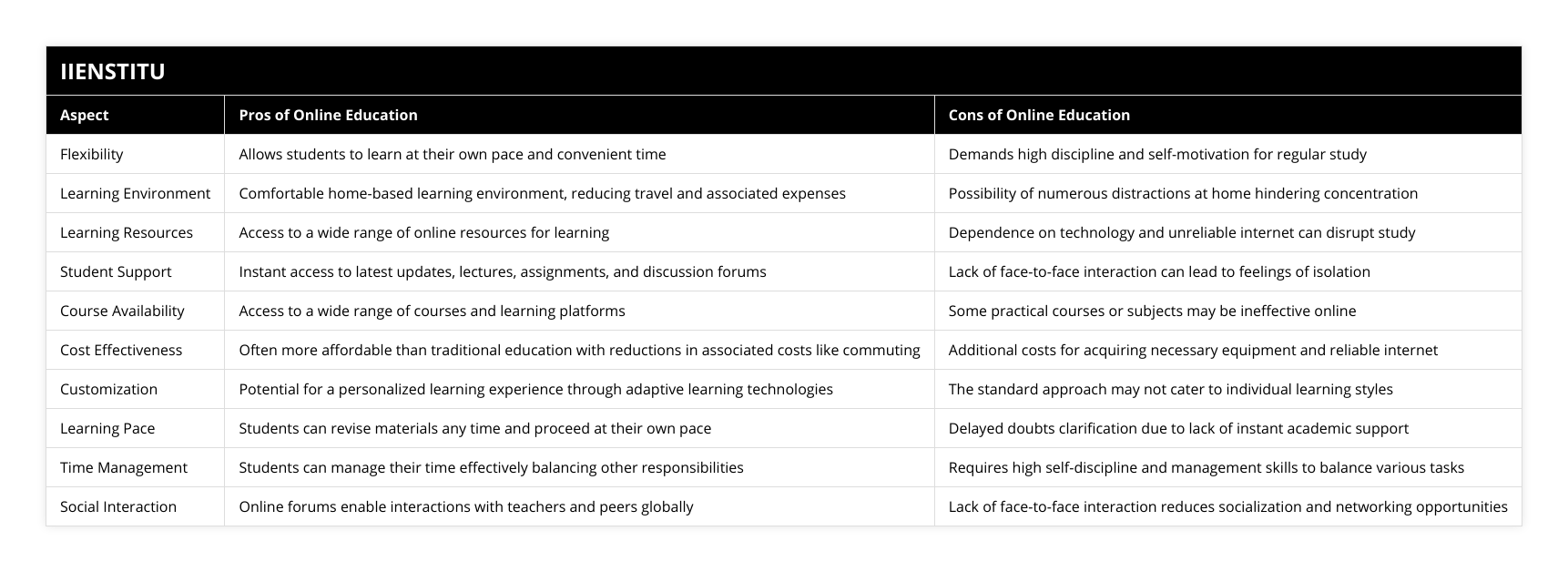
Frequently Asked Questions
Is online learning more effective than face-to-face learning in terms of student comprehension and knowledge retention?
Effectiveness of Online Learning
As technology continues to advance, online learning is becoming a prolific method for education, offering flexibility and accessibility to students around the world. However, its overall effectiveness compared to traditional face-to-face learning in terms of student comprehension and knowledge retention remains a vital concern for educators and learners alike.
Student Comprehension in Online Learning
In online learning, students can access materials at their own pace and revisit them as necessary. This empowers students to learn more deeply and ensures they have the appropriate amount of time to grasp complex concepts. On the other hand, face-to-face learning relies heavily on in-person lectures and communication, which may not cater to diverse learning styles and could hinder comprehension. Furthermore, online platforms with discussion boards and forums foster peer-to-peer interactions, enabling learners to seek support and clarify concepts with their fellow students, enhancing the comprehension process.
Knowledge Retention through Digital Platforms
Another important factor to consider is the long-term knowledge retention of students. Research indicates that online learning platforms enable the use of multimedia, such as videos, animations, and interactive simulations, which appeal to various learning styles and provide a richer learning experience. This diversity in teaching approaches, coupled with the ability to revisit materials, aids in knowledge retention. Notably, a meta-analysis by the U.S. Department of Education reported that online learners had more significant knowledge retention compared to face-to-face students.
Blended Learning: An Optimal Approach
While the arguments above might suggest the superiority of online learning, it is crucial to acknowledge that face-to-face learning provides the essential human connection that fosters a sense of collaboration, empathy, and social skills that cannot be wholly replicated online. Therefore, many educational institutions are adopting blended learning approaches to achieve optimum outcomes by combining the unique benefits of both online and traditional learning methods.
In conclusion, student comprehension and knowledge retention seem to favor online learning due to its flexibility and multimedia richness, allowing students to engage deeply and efficiently with course materials. Nevertheless, blended learning emerges as the most effective approach, integrating the advantages of digital accessibility with the invaluable social aspects of face-to-face learning.
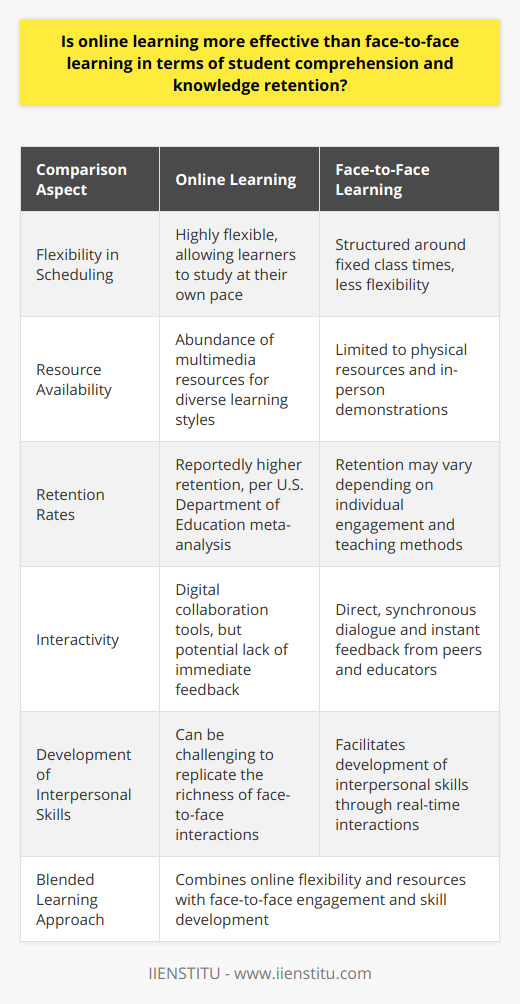
In the future, can online education be expected to completely replace traditional classroom-based learning, or will it merely supplement it?
Online Education as a Replacement or Supplement
Online education is a constantly evolving field, benefiting from advancements in communication technology and teaching methods. Nonetheless, the question remains: can online education be expected to completely replace traditional classroom-based learning, or will it merely supplement it? To answer this query, it is crucial to consider several factors such as accessibility, effectiveness, and the role of human interaction in learning experiences.
Accessibility and Availability
Online education has undoubtedly increased the accessibility and availability of learning opportunities to a broad range of individuals, regardless of their geographical location. It enables learners to engage in courses, certifications, and programs without having to physically attend a traditional educational institution. Nevertheless, various populations, especially in developing countries or remote areas, may still face a digital divide, which prevents them from fully embracing online learning opportunities. Consequently, traditional classroom-based learning will likely continue to serve as an essential option for these populations.
Effectiveness and Human Interaction
The effectiveness of online education compared to traditional classroom-based learning is another essential factor to consider. Studies have shown that students in well-structured online courses perform as well or even better than those in traditional classroom settings. However, aspects such as learner motivation, engagement, and discipline significantly impact the quality of online education outcomes.
Moreover, the role of human interaction in educational settings should not be overlooked. Although online education can incorporate interactive elements and virtual communication, it might still struggle to adequately replicate the full range of interpersonal dynamics present in the conventional classroom environment. Hence, the necessity to maintain in-person interaction as a critical component of learning argues against the notion that online education will entirely replace traditional classroom-based learning.
Hybrid Learning Models
Given the considerations above, it is reasonable to assume that online education will continue to expand and enhance its effectiveness as technology develops, thereby further revolutionizing learning opportunities. However, it is not likely that online education will wholly replace traditional classroom-based learning. Instead, hybrid learning models that incorporate both online and in-person components will become widespread, offering a flexible combination of educational approaches that cater to diverse learning styles and preferences while maintaining essential aspects of human interaction.

Based on current research, what conclusions can be drawn about the overall efficacy and impact of online learning on educational outcomes?
Overall Efficacy of Online Learning
Based on current research, the overall efficacy of online learning varies depending on the learners' needs and the quality of the online resources. Studies have shown that online learning can be as effective as traditional classroom instruction, with some evidence suggesting that it may even lead to better outcomes in certain cases (Means et al., 2010). However, not all online learning materials are created equal, and the success of this mode of instruction largely depends on the support provided to learners in terms of course design, content, and interaction with instructors (Cavanaugh et al., 2004).
Impact on Learner Engagement
Online learning also has the potential to improve learner engagement, as it usually offers students more flexibility and control over their learning experience (Martin & Bolliger, 2018). The use of multimedia, interactive content, and well-designed activities can lead to increased interest and participation. However, the effectiveness of online learning relies upon the students' motivation and commitment to completing the course; they must be proactive in seeking help and interacting with their peers and instructors for guidance and support (Kearsley, 2000).
Influence on Access and Inclusivity
As for the impact of online learning on educational outcomes, it is evident that this mode of instruction can widen access to education by overcoming geographical barriers and providing opportunities for learners from diverse backgrounds (Zawacki-Richter et al., 2020). Moreover, online learning can be tailored to suit individual learners' needs, promoting inclusivity and accommodating students with disabilities or other limitations that may be faced within traditional classroom settings (Burgstahler, 2002).
Conclusion
In conclusion, current research indicates that online learning can be an effective and impactful method of instruction, with the potential to improve learner engagement, widen access, and promote inclusivity. However, to achieve optimum educational outcomes, it is crucial that online learning experiences are well-designed, supported, and tailored to suit the needs of individual learners.
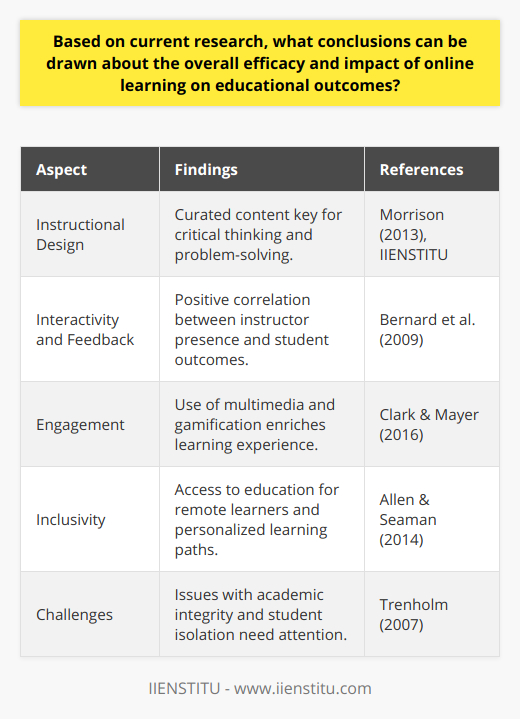
How has the transition to online learning affected the quality of education for students during the pandemic?
Impact on Quality of Education
The shift to online learning during the COVID-19 pandemic has significantly affected the quality of education for students. This abrupt transition has caused both positive and negative consequences.
Accessibility and Flexibility
One beneficial aspect of online learning is its potential for increased accessibility and flexibility. Students can access educational materials and resources from the comfort of their homes, eliminating the need for physical attendance in classrooms. This approach allows for multiple learning styles and pacing, as students can work on assignments and review materials at their convenience.
Decreased Social Interaction
However, a notable drawback of online learning is the reduction in social interaction, which can be crucial for students' development and learning experiences. Face-to-face communication facilitates collaborative learning and fosters a sense of belonging. This critical aspect of the education system is difficult to replicate in a virtual environment.
Decreased Engagement and Motivation
Moreover, the transition to online learning has led to declining engagement and motivation among students. The absence of a structured classroom environment and direct interactions with peers and educators often results in lower concentration and dedication to learning. Distractions at home can also make it challenging for students to remain focused and fully engaged in their coursework.
Technical Difficulties
Technical issues and insufficient resources further exacerbate the challenges of online learning. Not all students have access to reliable internet connections and necessary technologies, placing them at a disadvantage in the new virtual learning format. Students in rural areas and low-income households are more likely to face challenges in accessing quality online education.
Adaptation and Training
To improve the quality of online education during the pandemic, educators must adapt and enhance their teaching methods for the digital environment. Adequate training and support are essential in ensuring that instructors can effectively deliver virtual lessons while addressing the diverse needs of their students. Additionally, developing strategies to promote and maintain student engagement and motivation is critical.
In conclusion, the transition to online learning during the COVID-19 pandemic has both positive and negative effects on the quality of education students receive. Although it offers accessibility and flexibility, it also reduces social interactions and jeopardizes students' motivation and focus. To overcome these challenges and optimize online learning, educators must adapt their teaching methods and develop strategies to support student engagement.
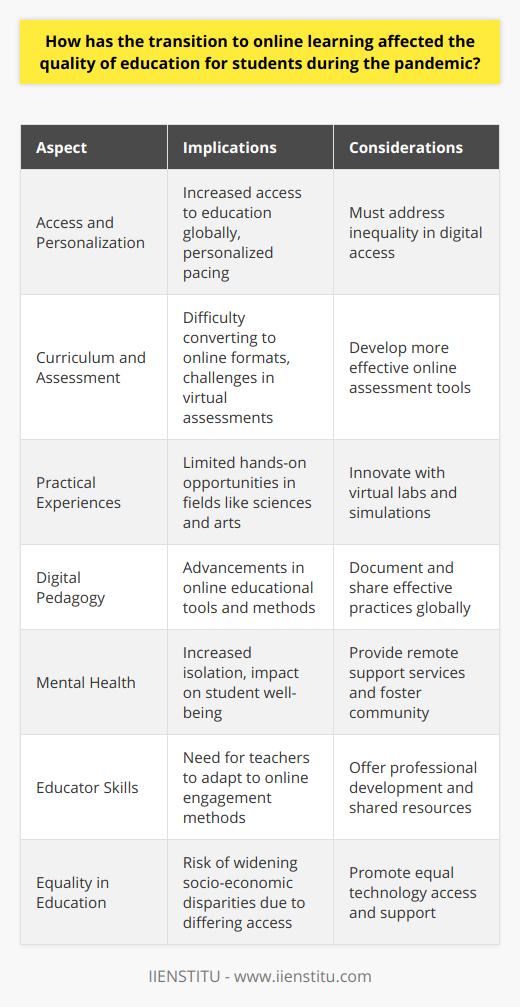
What are the primary factors that contribute to the success or failure of an online learning experience in higher education?
Factors Influencing Online Learning Success
Student Engagement
One primary factor contributing to the success of online learning in higher education is the level of student engagement. Active participation increases knowledge retention, enhancing the overall learning experience.
Technological Infrastructure
The availability of robust and user-friendly technological infrastructure is imperative for a successful online learning experience. Access to high-speed internet, reliable hardware, and software tools significantly impact the learning outcomes.
Instructional Design
Effective instructional design plays a crucial role in determining the success of an online learning experience. Well-designed courses with clearly defined objectives, interactive content, and regular assessments help to maintain students' motivation and interest.
Student Support Services
Providing comprehensive student support services, such as academic advising, technical assistance, and career counseling, is crucial for a positive online learning experience. Adequate support can reduce student anxiety and promote better learning outcomes.
Faculty Competence
The competence of faculty members in delivering and facilitating online education significantly influences the success of online learning. Instructors should have the required skills and knowledge to adapt their teaching strategies for the online environment.
Sense of Community
Creating a sense of community among online learners can enhance the learning experience by fostering collaboration, promoting peer feedback, and reducing isolation. One way to achieve this is by incorporating group activities and discussion forums into the course design.
Individual Learning Styles
Considering individual learning styles when designing and delivering online courses can increase the chances of success for diverse learners. Adapting teaching methodologies and offering a variety of learning resources can cater to different learning preferences.
Time Management Skills
Online learners need to have effective time management skills, as they are primarily responsible for allocating their study time. Having a structured study schedule and prioritizing tasks can improve the learning experience.
Motivation and Self-discipline
Lastly, personal traits such as motivation, self-discipline, and self-efficacy play a significant role in determining the success of an online learning experience. Students who can set and achieve goals, manage their time, and remain disciplined often experience greater success in online higher education.

How can educators and institutions improve the effectiveness of online learning environments to better meet the needs and expectations of their students in comparison to traditional face-to-face instruction?
**Adapting Teaching Methods**
Educators can improve the effectiveness of online learning environments by adjusting their teaching methods to suit virtual platforms. This may include providing clear instructions and guided practice with digital tools, offering personalized feedback, and encouraging active engagement in class discussions. They can also utilize multimedia resources and adapt their teaching pace to accommodate diverse learning styles.
**Creating Collaborative Learning Opportunities**
Online learning environments can be enhanced by fostering collaborative learning experiences. This can be achieved by encouraging peer-to-peer interactions through discussion forums or virtual projects. Further, students can collaborate on research, problem-solving, and creative tasks, which can strengthen their communication, critical thinking, and teamwork skills, similar to face-to-face settings.
**Ensuring Access to Quality Content**
To better meet student needs, institutions should ensure a high standard of content and resources for online learning. By including a mix of educational materials, such as videos, readings, and interactive assignments, institutions can increase engagement and support different learning preferences. Additionally, incorporating real-world applications and case studies can provide students with a relevant and practical educational experience.
**Setting Clear Expectations and Goals**
Educators and institutions should establish and communicate clear expectations for online learning. This includes specific course objectives, assessment criteria, and participation requirements. By providing students with a transparent roadmap, institutions can encourage a sense of ownership and responsibility in their learning process. Furthermore, setting concrete short-term and long-term goals can help keep students motivated and focused amid the distractions of a virtual setting.
**Offering Ongoing Support**
To enhance the online learning environment, educators should provide consistent and accessible support. This may involve offering virtual office hours to address questions and concerns, creating online communities for peer support and collaboration, or providing additional resources for self-study. Institutions should also ensure that technical assistance is available to ensure smooth delivery of course materials and to facilitate students' access to learning platforms.
By adapting teaching methods, fostering collaboration, ensuring access to quality content, setting clear expectations, and offering ongoing support, educators and institutions can significantly improve the effectiveness of online learning environments. Consequentially, these improvements can help bridge the gap between virtual and traditional face-to-face instruction, leading to greater student satisfaction and success.

How effective is online learning in terms of student engagement, motivation, and overall satisfaction in comparison to traditional face-to-face learning?
Effectiveness of Online Learning
When it comes to student engagement, motivation, and overall satisfaction, the effectiveness of online learning is a topic of continued debate amongst educators and students alike.
Student Engagement in Online Learning
In comparing online to traditional face-to-face learning, some studies have found that online learning can actually promote higher levels of student engagement. This is attributed to the flexibility and autonomy provided by virtual classrooms, which allows learners to participate at their own pace and engage in activities that best suit their learning styles. However, it is crucial that online platforms utilize interactive tools and resources to foster engagement, as passive consumption of digital content may lead to disinterest and disconnection.
Motivation in Online Learning
Motivation is another key factor in determining the effectiveness of online learning. Self-discipline and time management skills are essential for learners to excel in this environment, since they often bear the responsibility of setting their own schedules and pacing themselves. Instructors play a critical role in supporting student motivation by providing timely feedback, setting clear expectations, and promoting a sense of community within the virtual classroom. Social interaction is vital in maintaining motivation, so platforms that facilitate collaboration, group projects, and discussions are necessary for satisfaction and success in the online learning environment.
Overall Satisfaction with Online Learning
Overall satisfaction within an online learning context largely depends on the quality of course design, as well as learners’ ability to adapt to the virtual environment. When courses are effectively structured and offer a variety of learning materials, students typically experience a greater level of satisfaction than if they were participating in traditional face-to-face instruction. Additionally, students with a natural affinity for technology and a preference for self-directed learning often thrive in online settings.
In Conclusion
To summarize, online learning can be effective in terms of student engagement, motivation, and overall satisfaction, provided that the courses are well-designed, the platform supports collaboration, and learners possess the necessary skills to succeed in this environment. While not without its challenges, online learning has the potential to equal or even surpass the quality of traditional face-to-face education, ultimately benefiting the modern learner.
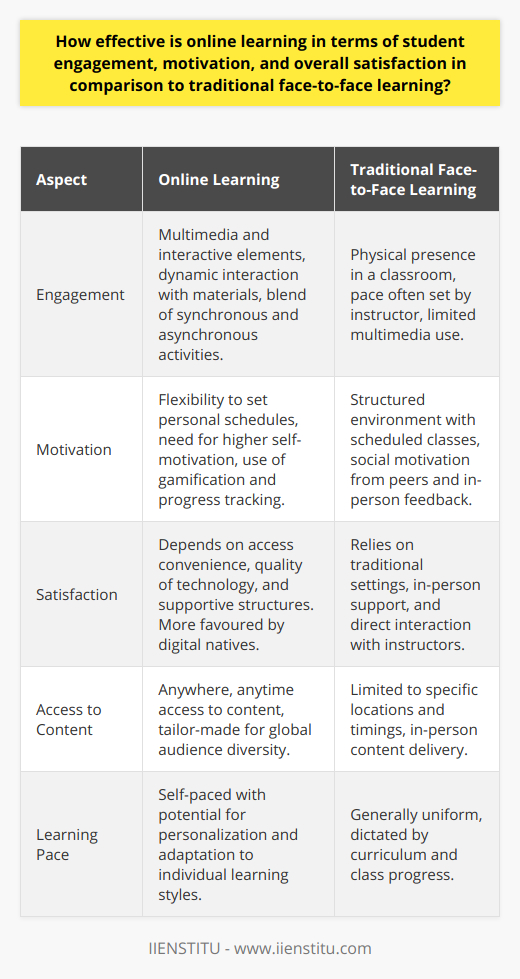
What factors have contributed to the increasing popularity and adoption of online learning over the past decade and, in particular, during the COVID-19 pandemic?
Factors Driving Online Learning Adoption
Over the past decade, several factors have contributed to the rising prominence and acceptance of online learning. The continuous advancements in technology play a significant role in this development, as improved internet access and the availability of affordable devices for a wider demographic have made online learning more accessible. Furthermore, the rapid growth of Massive Open Online Courses (MOOCs) and the need for upskilling in competitive job markets have prompted individuals to opt for flexible and cost-effective e-learning solutions.
COVID-19's Impact on E-Learning
The COVID-19 pandemic has caused a significant number of schools, colleges, and universities to shift towards virtual modes of teaching. The need to ensure continuity in education in the midst of a global health crisis has provided a major impetus for educational institutions and governments to actively embrace and invest in online learning platforms. This sudden and unexpected situation has forced both learners and educators to adapt to new teaching methodologies and online communication tools.
Meeting Diverse Needs
Online learning provides a level of adaptability in terms of scheduling and course design, which can cater to a wide range of individual needs. It allows for self-paced learning, enabling learners to progress at a speed that suits their unique requirements while balancing other personal and professional commitments. In addition, the vast array of available course formats, from free MOOCs to university-backed programs, allows students to gain access to quality education, irrespective of their geographic location, financial constraints, or personal preferences.
Digital Skills for a Modern Workforce
In an increasingly digital world, online learning opportunities give individuals the chance to develop necessary skills for the contemporary job market. The ongoing digitalization and the emergence of new technologies require employees to constantly update their skills to stay relevant and competitive. E-learning platforms, which frequently update their course offerings in line with industry demands, have become an ideal medium for individuals to augment their skill set and prepare for the modern workforce.
In conclusion, a combination of factors, including technological advancements, the need for flexible learning options, the diversification of course offerings, and the current global pandemic, have significantly contributed to the growing popularity and adoption of online learning over the past decade. As the demand for digital skills and adaptive learning opportunities continues to rise, it is expected that online learning will hold an increasingly important place in contemporary education systems.
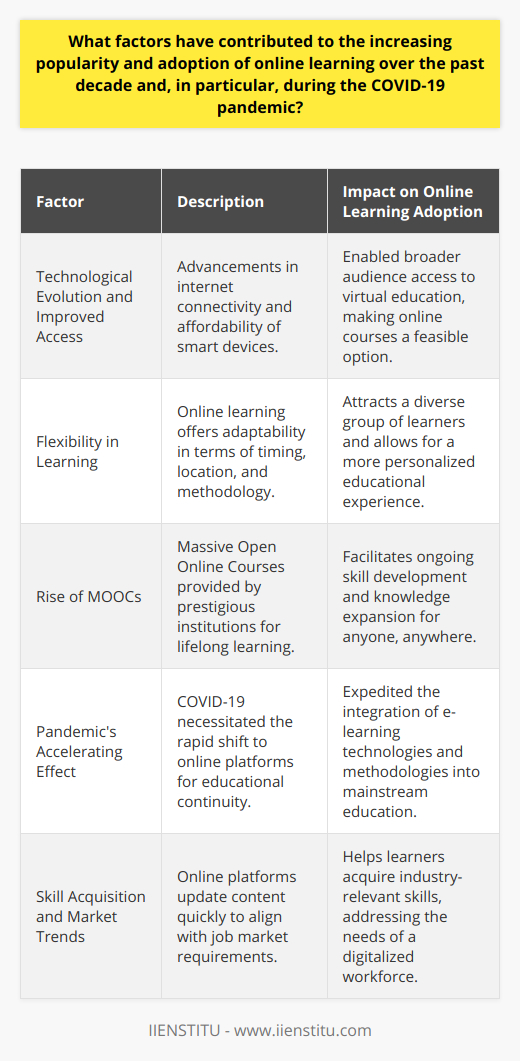
Can the rapid shift toward online education during the pandemic be considered a success, or have issues related to accessibility, equity, and technological limitations hindered the effectiveness of learning for a significant percentage of students?
Assessing the Success of the Shift towards Online Education
The rapid transition to online education during the pandemic has been a novel experience for students, educators, and institutions worldwide. While it was essential to maintain educational continuity, the effectiveness of this swift change is a matter of debate.
Access to Technology and Internet
A significant barrier for online education is the lack of access to the required technology and stable internet connections for many students. Particularly in rural or economically disadvantaged areas, some students may not have access to the devices, such as computers or tablets, or the reliable internet connections needed to participate effectively in online classes. Consequently, these students may not have received an equitable education during the pandemic, with their learning becoming affected by the limitations of their environment.
Addressing Equity and Inclusion
Online education has also raised concerns regarding equity and inclusion, as students with disabilities or language barriers may have faced additional challenges. For example, students with hearing impairments may struggle in the absence of adequate assistance, such as live captions or sign language interpreters. Similarly, interactions in a multilingual classroom may be hindered by the limitations of translated materials, leading to potential miscommunication and reduced learning outcomes.
Effectiveness and Student Engagement
As online learning became the norm, doubts persist about its effectiveness compared to in-person instruction. A critical issue is the ability to maintain student engagement in virtual classrooms. Participating in discussions, group projects, or hands-on activities within an online environment can be challenging, and students may feel isolated from their peers or disengaged from the learning process. Academic performance may be adversely affected, while the differences between the support provided to students from various backgrounds may widen existing learning gaps.
Adaptation and Continuous Improvement
While the pandemic's push for online education has revealed various obstacles, educators and institutions have been working to address them and improve the online learning experience. Implementing engaging instructional strategies, strengthening technical support, ensuring accessibility, and providing targeted assistance for disadvantaged students have been common goals. Additionally, the potential long-term benefits of developing online and hybrid learning models, such as increased flexibility and reduced costs, may translate into future educational innovations.
In conclusion, the shift toward online education during the pandemic has raised numerous questions regarding accessibility, equity, and effectiveness, indicating that it might not have been a wholly successful endeavor. However, it has catalyzed essential adaptations and innovations in education that may yield positive long-term results.
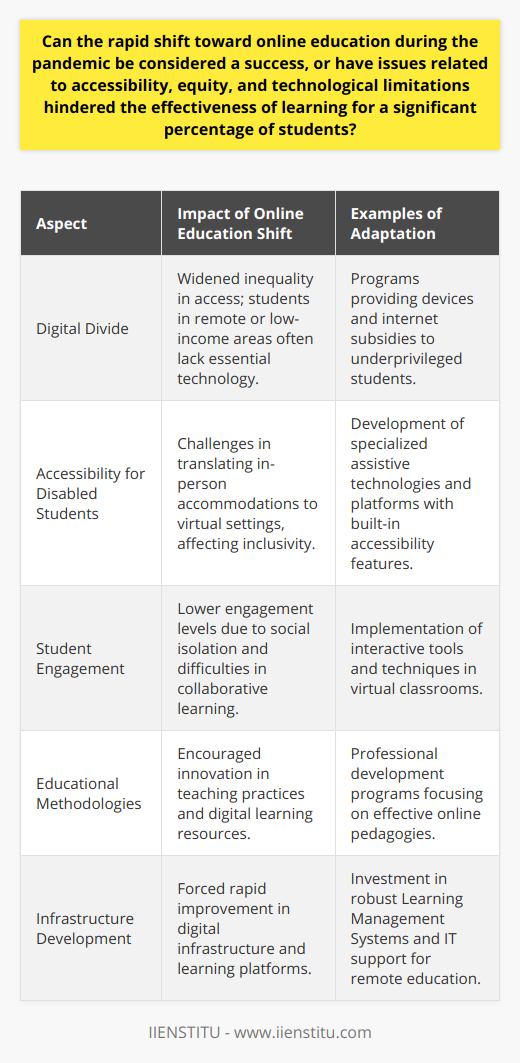
How does the quality of interaction between students and instructors in online learning environments compare to that of traditional face-to-face settings?
Comparing Interaction Quality
In comparing the quality of interaction between students and instructors in online learning environments and traditional face-to-face settings, it is crucial to consider the key differences and adaptability of both methods.
Online Learning Interactions
Online learning environments typically involve asynchronous communication, allowing students and instructors to engage in discussions and share resources at their preferred pace. While this offers flexibility, it may lead to reduced immediacy in feedback and difficulty establishing rapport. However, innovations in technology, such as video conferencing, can mitigate these concerns by allowing face-to-face interactions in real-time, fostering a more connected and dynamic learning environment.
Traditional Classroom Interactions
In contrast, traditional face-to-face settings facilitate immediate feedback and spontaneous dialogue, promoting a more interactive and engaging learning experience. The physical presence of instructors and students also enables non-verbal cues, allowing for deeper understanding and enhanced communication. However, this format may pose limitations to students who have difficulty attending classes in person or focusing during lengthy lectures.
Maximizing Interaction Quality
To maximize the quality of interaction in both online and traditional environments, a blended learning approach can be adopted. This combines the strengths of online and face-to-face instruction, ensuring a well-rounded learning experience that caters to individual students' needs. For instance, utilizing online discussion forums, video lectures, and webinars, alongside in-person classes and group activities, can create a diverse and engaging learning environment that fosters high-quality interactions.
In conclusion, the quality of interaction between students and instructors depends on the effective utilization and adaptation of each learning format's strengths and limitations. A blended approach can maximize the benefits of both online and traditional learning environments, thereby increasing student engagement, fostering meaningful connections, and enhancing overall learning outcomes.

To what extent do individual learning styles and preferences impact the effectiveness of online vs. traditional education?
Impact of Individual Learning Styles
Individual learning styles and preferences significantly impact the effectiveness of both online and traditional education, as one might be more suitable for certain learners than the other. Online education often caters to visual and auditory learners, those who prefer self-directed study and are comfortable with technology. On the other hand, traditional education typically accommodates kinesthetic and social learners, who thrive in a structured classroom environment with human interaction.
Flexibility of Online Education
Online education offers a higher level of flexibility than traditional classrooms, allowing students to study at their own pace and access content at their convenience. This is particularly advantageous for students with time constraints or those juggling multiple commitments. By catering to the needs of self-directed learners, online education can contribute to greater understanding and retention of material, resulting in a more effective learning experience for this group.
Interaction in Traditional Education
Conversely, traditional education fosters social interaction and provides a platform for valuable face-to-face communication between students and educators. In-person exchanges and group activities enable students to develop critical thinking and problem-solving skills, which might be more challenging to achieve through online learning. Furthermore, traditional education often provides immediate feedback and clarification, crucial for those who struggle to grasp complex concepts without live support.
Accessibility of Educational Resources
Other factors, such as the accessibility of educational resources, may also impact the effectiveness of online and traditional education for individual learners. While online platforms enable learners to access a wealth of digital resources, it assumes that all students possess the necessary equipment and internet access. Traditional education, on the other hand, relies on physical resources, which may limit the availability of information and learning materials to those with restricted access.
Conclusion
In conclusion, the extent to which individual learning styles and preferences impact the effectiveness of online and traditional education depends on the specific needs, characteristics, and circumstances of each student. While online education may facilitate greater convenience and flexibility, traditional education remains vital for fostering critical thinking, problem-solving skills, and social interaction. Ultimately, a balanced approach that combines the benefits of both online and traditional education may be the most effective way to cater to diverse learning styles and preferences.
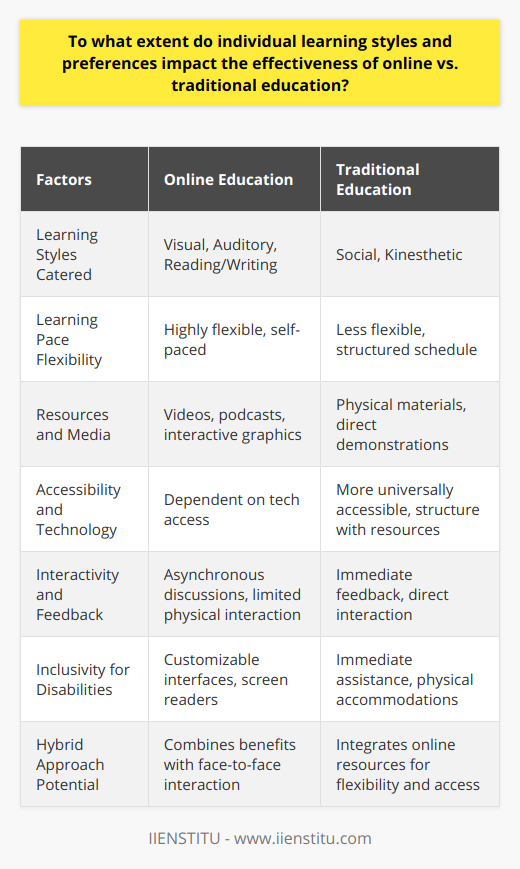
What are the potential long-term consequences of the widespread adoption of online learning on the overall quality and accessibility of education?
Impact on Overall Quality
The widespread adoption of online learning has the potential to significantly impact the overall quality of education. As digital tools and resources continue to improve, online learning can provide learners with access to a wide range of educational content, from introductory courses to advanced programs. This offers opportunities for personalized learning experiences and engagement with source materials beyond what traditional classrooms may provide.
However, the effectiveness of online learning is dependent on several factors, including the quality of instructional materials, the instructor's capabilities, and the learner's motivation and discipline. Consequently, the long-term consequences on overall education quality may vary among individuals and institutions.
Accessibility and Digital Divide
Additionally, online learning can present both opportunities and challenges when it comes to accessibility. On one hand, digital platforms can offer the possibility of education for individuals who may have previously faced geographical, financial, or physical barriers to accessing educational opportunities. Furthermore, e-learning can foster greater flexibility, allowing learners to engage in their studies at their own pace and at the times that best suit their personal circumstances.
On the other hand, the expansion of online learning may also exacerbate the digital divide, as not all individuals have equal access to digital devices, stable internet connections, or the necessary technology skills for online learning. In order to address these disparities, educational institutions, governments, and private-sector organizations should work together to provide equitable opportunities and ensure that technology-enhanced learning is accessible to as many individuals as possible.
Changes to Traditional Institutions and Educator Roles
Moreover, the widespread adoption of online education may have long-term consequences on the structures and roles of traditional educational institutions. For instance, as the demand for digital learning continues to grow, some brick-and-mortar schools may experience reduced enrollment, thereby necessitating institutional adjustments.
Furthermore, the role of educators in online learning environments may be distinct from their functions within traditional classrooms, requiring them to develop new skills, adapt to different pedagogical approaches, and find innovative ways to engage learners. This shift may necessitate professional development, training, and support for educators as they transition to facilitating online learning experiences.
In conclusion, the long-term impact of widespread online learning adoption on the overall quality and accessibility of education is multifaceted. While e-learning may present opportunities for improved educational experiences and increased access, determining its overall effectiveness depends on several factors. As such, a combination of stakeholder collaboration, well-designed instructional materials, and support for both learners and educators will be crucial in harnessing the potential benefits of online learning for future generations.
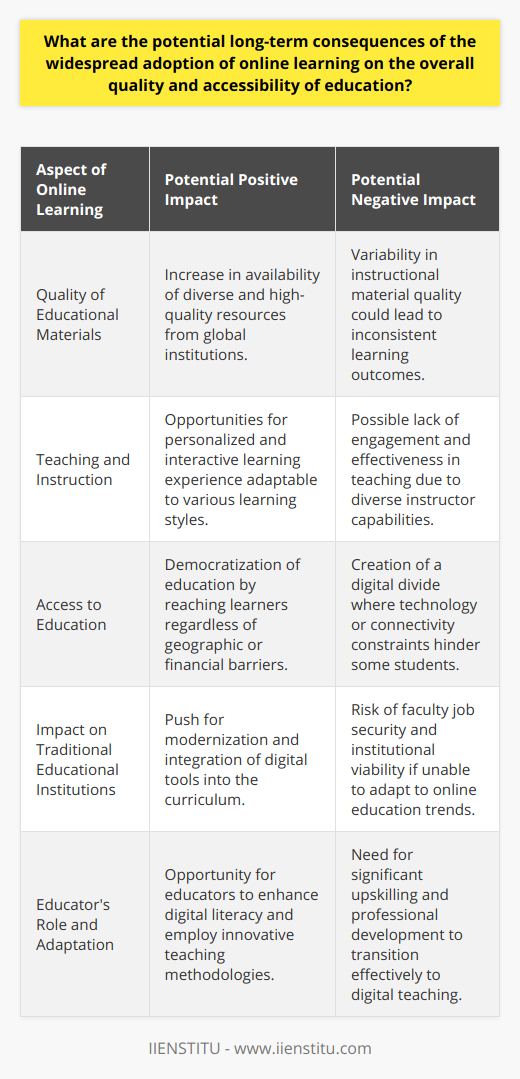
Is online education more effective than traditional learning when considering the development of critical thinking, problem-solving, and communication skills?
Effectiveness of Online Education
When comparing the effectiveness of online education with traditional learning, evaluations must be made concerning the development of critical thinking, problem-solving, and communication skills. In recent years, online learning has become increasingly popular due to the flexibility and adaptability it provides students. However, this raises the question of whether online education can be deemed more efficient than conventional learning in fostering crucial life skills.
Development of Critical Thinking
In online learning environments, students are often provided with an opportunity to self-direct their educational experiences, which can potentially contribute to improved critical thinking skills. The ability to select and engage with relevant information, evaluate arguments, and synthesize ideas fosters a deeper understanding of content. Additionally, many online learning platforms offer resources, including interactive forums and multimedia resources, that facilitate peer collaboration in discussing and exploring subject material. This discourse can also enhance students' critical thinking abilities.
Problem-Solving Skills in Online Education
The nature of online learning often requires students to identify and resolve issues independently and promptly, as remote access to assistance might be limited. As a result, students may develop more significant proficiency in problem-solving. Moreover, online courses regularly present students with instructional challenges (e.g., multimedia assignments, digital simulations), encouraging them to acquire and apply problem-solving skills across various technological platforms.
Building Communication Skills
Contrary to the common misconception that online education hinders the development of communication skills, the features of online learning can actually promote effective communication. Online learning platforms frequently facilitate communication through discussion forums, video conferencing, and document sharing, which provide opportunities for meaningful interaction among students and instructors. Digital literacy proficiency is vital in contemporary society, and online education can foster this skill by obliging students to use diverse communication platforms.
Conclusion
When considering the development of critical thinking, problem-solving, and communication skills, the effectiveness of online education is comparable to, if not surpassing, traditional learning. Nonetheless, it should be acknowledged that individual student success may vary based on personal learning styles or preferences. Future research should explore optimal practices to maximize learning outcomes across various educational modalities.
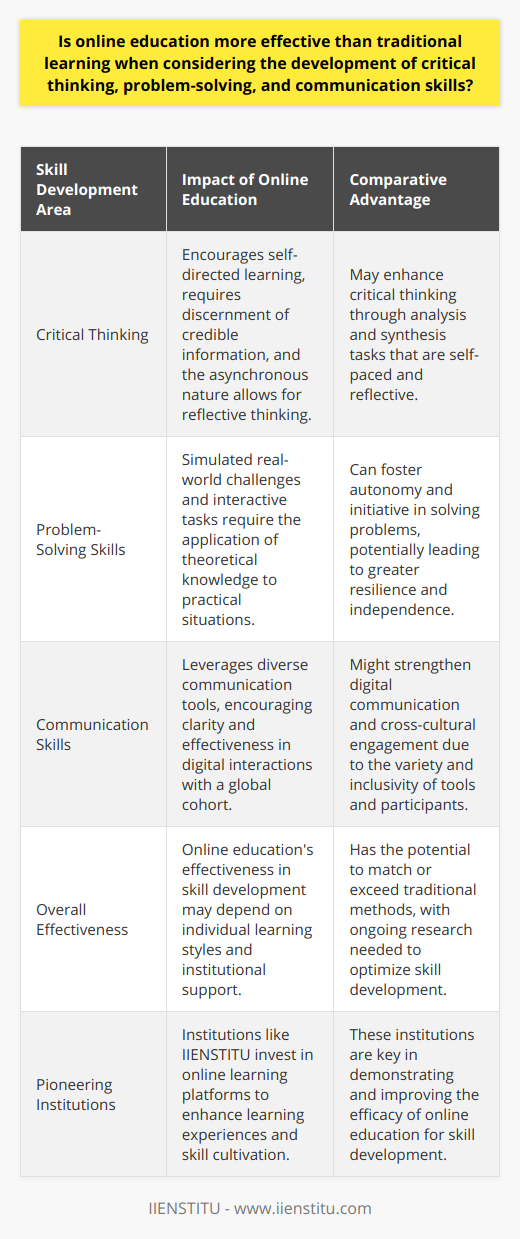
How has online learning affected students' ability to develop and maintain strong social connections within educational settings?
Impact on Social Connections
Online learning has significantly altered how students develop and maintain strong social connections within educational settings. The transition from traditional classroom learning to web-based platforms has brought about both positive and negative implications for students' social lives.
Virtual Social Interaction
To begin with, the internet has provided students with various platforms for virtual social interaction. Discussion boards, chat rooms, and social media allow students to stay connected and communicate with their classmates and instructors outside the classroom. This digital communication fosters a sense of belonging and camaraderie among students.
Collaborative Learning Opportunities
Furthermore, many online courses incorporate collaborative learning opportunities, which involve students working together to achieve a common goal. Such activities not only help to improve learning outcomes but also provide a crucial avenue for students to build relationships with their peers. By collaborating and exchanging ideas, students can develop essential communication skills and lasting friendships.
Decreased Face-to-Face Interaction
However, the lack of face-to-face interaction in online learning can also hinder the development of strong social connections. Human beings are naturally social creatures, and physical presence plays a significant role in connecting with others. The absence of nonverbal cues and body language during online interactions can limit students' ability to establish deeper connections and fully understand the perspectives of their peers.
Isolation and Loneliness
Moreover, the isolated nature of online learning can contribute to feelings of loneliness and disconnectedness. Students who rely solely on digital platforms for their educational needs may find it challenging to form meaningful relationships with others. This lack of personal connection can negatively impact their overall well-being and academic performance.
Adapting to New Social Norms
In conclusion, online learning has both facilitated and hindered students' capacity to develop and maintain strong social connections within educational settings. As distance education continues to grow in popularity, it is essential for students, instructors, and educational institutions to adapt to this new way of learning and find innovative strategies to promote social connections and alleviate feelings of isolation among students.
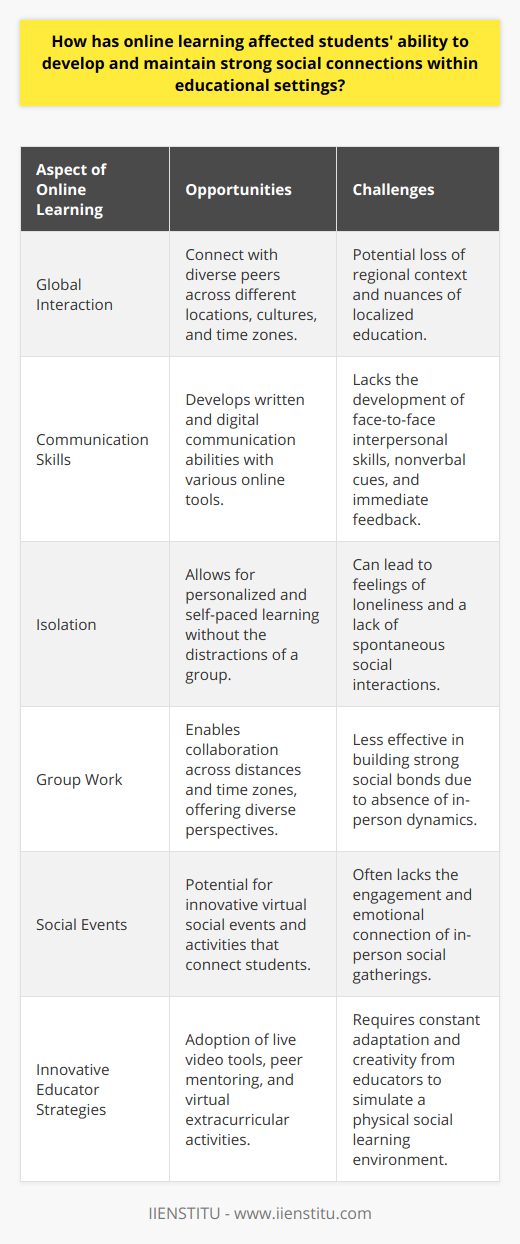
Is online school better for mental health in comparison to traditional learning environments, given the unique challenges and stressors associated with each educational modality?
Comparing the Impact on Mental Health
To determine whether online school is better for mental health as compared to traditional learning environments, it is crucial to examine the unique challenges and stressors associated with each educational modality. Mental health outcomes will be contingent upon the degree to which these factors affect individual students and their individual coping abilities. In this regard, both online and traditional learning environments possess potential benefits and drawbacks concerning mental health.
Benefits of Online Schooling
Firstly, online schooling provides increased flexibility and autonomy, enabling students to create customized schedules and manage their workload more effectively. This aspect can contribute to reduced stress and a greater sense of control over one's daily routine. Additionally, online learning may mitigate the negative impact of certain social stressors, such as bullying or cliques, which are more prevalent in traditional settings.
Drawbacks of Online Schooling
Conversely, online schooling may exacerbate feelings of isolation and loneliness, as students miss out on essential face-to-face interactions with peers and teachers. Moreover, the increased screen time and sedentary nature of the virtual learning environment can lead to mental fatigue and difficulty concentrating. These factors may negatively affect the overall mental well-being of some students.
Advantages of Traditional Schools
On the other hand, traditional learning environments offer structured schedules, fostering self-discipline and time management skills. Additionally, direct interactions with teachers and classmates can enhance students' emotional and social development, and learning through group work can improve collaboration skills. These attributes can promote a healthy emotional state among students in traditional schools.
Challenges of Traditional Schools
Nonetheless, traditional learning environments can also be sources of stress, as students must navigate more rigid schedules and face pressures to conform, academically and socially. Furthermore, traditional schools often focus on performance metrics and competition, which can exacerbate feelings of anxiety and inadequacy.
Conclusion
In conclusion, the impact of online school versus traditional learning environments on mental health is multifaceted, with both platforms presenting unique challenges and stressors. The suitability of online or traditional learning environments largely depends on individual students' preferences, needs, and coping strategies. As such, educators and policymakers should consider these factors when designing and implementing education systems to maximize the mental well-being of all students.
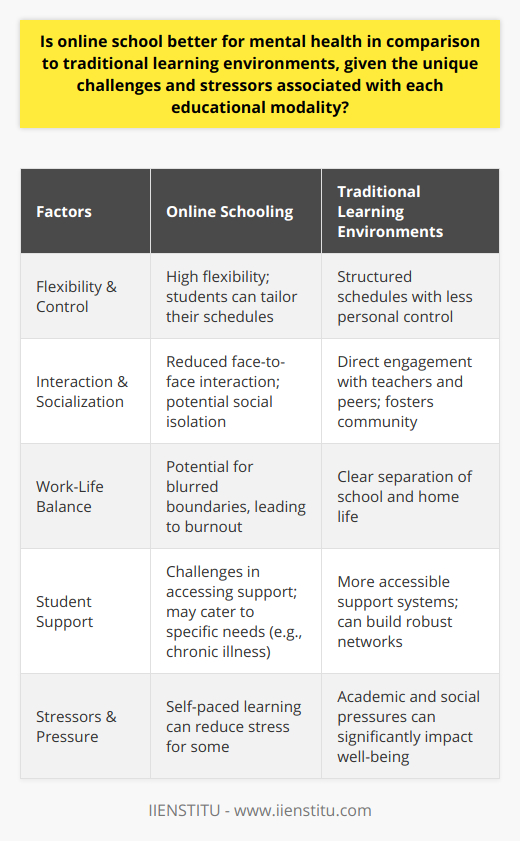
Is online learning as effective as face-to-face learning in terms of fostering collaboration and communication skills among students?
Comparing Online and Face-to-face Learning
Effectiveness of Collaboration
In comparing online learning to face-to-face learning, it is essential to evaluate the effectiveness of both approaches in fostering collaboration and communication skills among students. Research shows that peer interaction and collaboration can be successfully facilitated through online platforms (Bower, Dalgarno, Kennedy, Lee, & Kenney, 2015). However, face-to-face learning remains more conducive to building relationships and trust among students, leading to more in-depth discussions and collaborative work (Vu, Fredrickson, & Meyer, 2019).
Roles of Technology and Instructor
The use of technology in online learning can both enhance and hinder the development of collaboration and communication skills. Online platforms offer various tools for real-time interaction, document sharing, and group work, making it possible for students to engage in collaborative activities (Garrison & Cleveland-Innes, 2010). However, technical challenges and the lack of nonverbal cues can lead to misunderstandings and hamper effective communication (Kear, Chetwynd, Williams, & Donelan, 2012). The role of the instructor is crucial in designing and facilitating collaborative activities in both settings to ensure meaningful communication among students (Vaughan, 2014).
Accounting for Learning Styles and Preferences
The effectiveness of online and face-to-face learning in fostering collaboration and communication skills also depends on individual learning styles and preferences. Some students thrive in the anonymous nature of online discussions, providing and receiving more honest feedback (Stodel, Thompson, & MacDonald, 2006). Others may struggle with the lack of physical presence and require face-to-face interactions to build rapport and develop collaborative skills effectively (Bower, Dalgarno, Kennedy, Lee, & Kenney, 2015).
Conclusion
In conclusion, both online and face-to-face learning can be effective in fostering collaboration and communication skills among students, with each approach having unique benefits and challenges. The key to maximizing collaboration and communication in both environments lies in the thoughtful and purposeful design of collaborative activities by instructors, the effective use of technology, and attentiveness to students' learning styles and preferences.
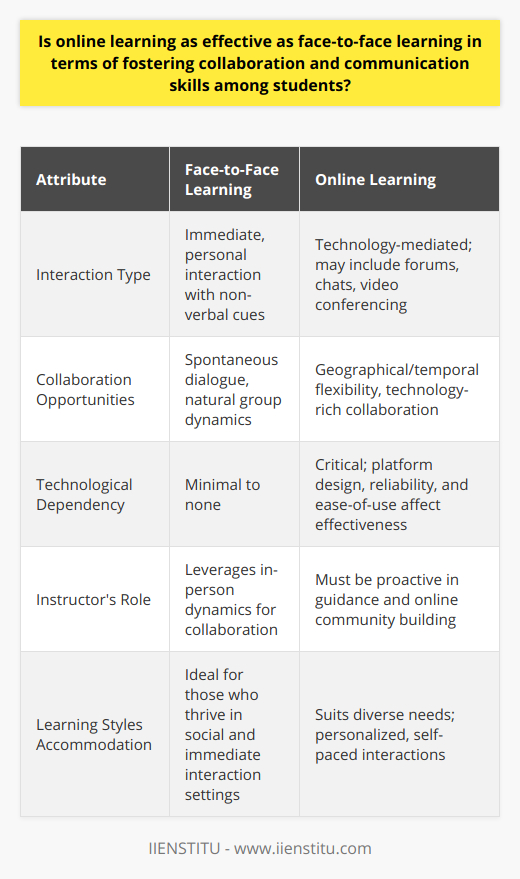
Can online schools be as effective as traditional schools in providing a well-rounded and holistic educational experience for students?
Online Schools vs. Traditional Schools
Effectiveness of Online Schools
Online schools have become increasingly popular as an alternative to traditional schools owing to the flexibility and accessibility they offer. In terms of academic pursuits, online schools can provide ample opportunities for students to access high-quality resources, engage in interactive discussions, and receive personalized feedback. Through the integration of multimedia tools and resources, online platforms can offer students a dynamic and engaging learning experience.
The Importance of a Holistic Education
However, a well-rounded and holistic educational experience goes beyond the mere attainment of academic knowledge. It also involves the development of students' social, emotional, and cognitive skills. In traditional schools, students engage in extracurricular activities, participate in group projects, and interact with their peers and educators. These interactions play a vital role in fostering collaboration, teamwork, and communication skills that are essential for personal and professional development.
Challenges for Online Schools
One of the main challenges for online schools in providing a holistic educational experience is the limited interaction and collaboration between students. While online platforms offer different ways for students to engage in discussions and exchange ideas, the nature of online communication can be impersonal and lack the warmth and spontaneity that characterizes face-to-face interactions. Additionally, online schools may provide fewer opportunities for students to participate in extracurricular activities and develop skills and interests outside of the classroom.
Possible Solutions
To address these challenges, online schools can integrate synchronous activities and real-time discussions to promote better communication and collaboration among students. Utilizing video conferencing and interactive tools, online instructors can create a more personalized and engaging learning environment. Additionally, online schools can partner with community organizations and local institutions to offer extracurricular activities and community service opportunities that supplement students' academic learnings and foster personal growth.
Conclusion
In conclusion, while online schools can be effective in providing access to high-quality educational resources and promoting academic success, there are limitations in replicating the social, emotional, and cognitive aspects of traditional schools. By focusing on creating more interactive and engaging learning environments and exploring partnerships to provide extracurricular opportunities, online schools can strive to ensure a more well-rounded and holistic educational experience for their students.
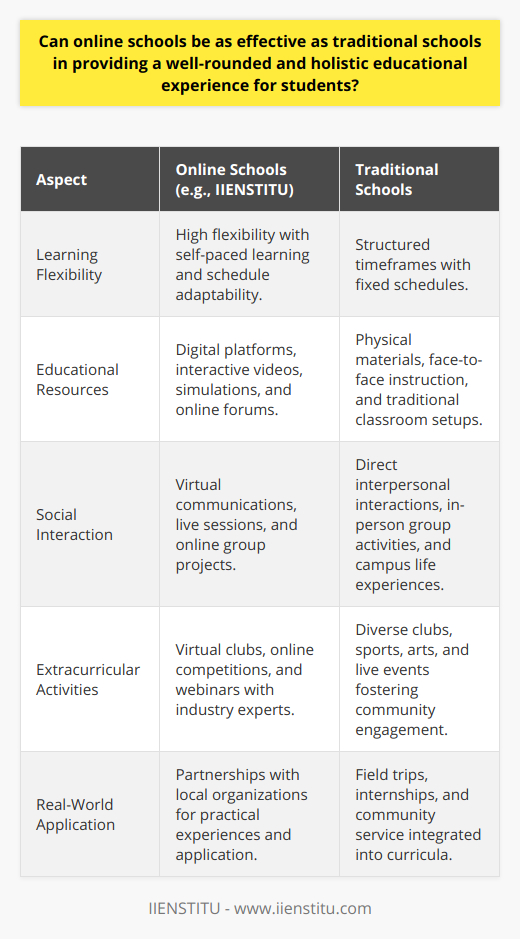
What are some advantages and disadvantages of online learning in terms of accessibility and inclusivity for students with diverse learning needs and backgrounds?
Advantages of Online Learning
Enhanced Flexibility
One distinct advantage of online learning for students from diverse learning needs and backgrounds is its enhanced flexibility. Online courses allow students to learn at their own pace, accommodating individual learning styles and abilities.
Wider Range of Resources
Additionally, online learning platforms provide access to a wider range of resources and materials, such as multimedia content, interactive simulations, and discussion forums. This broadens the scope of educational opportunities for students regardless of their geographic location or economic circumstances.
Reduced Physical Barriers
Furthermore, online learning reduces physical barriers for students with disabilities. The digital format enables the use of assistive technologies, such as screen readers, closed captions, and speech-to-text software, ensuring equal access to educational content.
Disadvantages of Online Learning
Lack of Personal Interaction
On the other hand, online learning also presents challenges in terms of accessibility and inclusivity. A significant drawback is the lack of face-to-face interaction, which may hinder the development of social skills and limit support networks for students with diverse learning needs and backgrounds.
Digital Divide
Another disadvantage is the digital divide, as students from low-income backgrounds may lack access to stable internet connections, up-to-date devices, and digital literacy skills. This disparity can exacerbate existing inequalities in educational opportunities and outcomes.
Inadequate Adaptation for Specific Needs
Lastly, not all online learning platforms are adequately adapted to fully address the specific needs of students with diverse learning backgrounds and abilities. For instance, the overreliance on text-based content may disadvantage auditory or visual learners, while the lack of tailored accommodations for neurodiverse students may hinder their success in a digital environment.
In conclusion, while online learning offers the potential for greater accessibility and inclusivity for students with diverse learning needs and backgrounds, it also presents challenges that must be addressed to ensure equal opportunities for success. Efforts to enhance digital access, improve the available resources, and create tailored accommodations can help mitigate these disadvantages and promote a more inclusive online learning environment.
